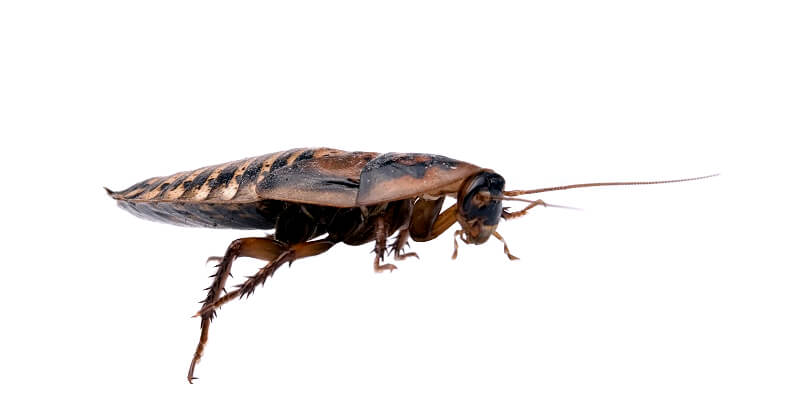How To Kill German Cockroaches
 German cockroaches (Blattella germanica) are notoriously difficult to exterminate due to their rapid breeding cycles and adaptability. These small, brownish insects can invade homes, restaurants, and offices, causing distress and posing health risks. Thankfully, there are a variety of methods available to kill them. Here’s a step-by-step guide to ridding your space of these unwelcome pests.
German cockroaches (Blattella germanica) are notoriously difficult to exterminate due to their rapid breeding cycles and adaptability. These small, brownish insects can invade homes, restaurants, and offices, causing distress and posing health risks. Thankfully, there are a variety of methods available to kill them. Here’s a step-by-step guide to ridding your space of these unwelcome pests.
Identification & Inspection
Ensure you’re dealing with German cockroaches. They are small (about 1/2 to 5/8 inch long), with two dark stripes on their pronotum (the region behind the head).
Begin your inspection in warm, dark, and damp areas, as these pests prefer such conditions. Check under sinks, cupboards, behind refrigerators, and cracks and crevices.
Sanitation
Before initiating any extermination process, it’s vital to maintain cleanliness.
- Remove Food Sources: Store food in airtight containers, clean up spills immediately, and don’t leave food out overnight.
- Limit Water Access: Fix leaky taps and pipes. Cockroaches need water to survive, so depriving them of it is essential.
- Regular Cleaning: Regularly clean floors, counters, and areas behind appliances. Cockroach feces, eggs, and shed skin can exacerbate allergies and attract more cockroaches.

Exclusion
Prevent further infestations by sealing entry points.
- Caulk and Seal: Use caulk to seal gaps in baseboards, cracks in walls, and spaces around pipes.
- Door Sweeps: Install these on exterior doors to prevent cockroach entry.
Baits and Gels
- Roach Baits: These are popular and effective solutions. The roach consumes the bait, returns to its nest, and dies. Other roaches eat the dead ones and also get poisoned.
- Gel Baits: These can be applied in tiny dots where roaches are commonly found. Keeping these baits out of reach of children and pets is essential.
Insect Growth Regulators (IGRs)
IGRs are substances that interfere with the growth and reproduction of insects. For cockroaches, they prevent larvae from developing into adults. Products like hydroprene and methoprene are common IGRs used against cockroaches.
Boric Acid
A tried-and-true method, boric acid acts as a stomach poison to cockroaches. When applied correctly, it is very effective. However, it must be used cautiously, as it can harm pets and humans.
- Application: Lightly dust boric acid in areas where cockroaches frequent. They’ll walk through it, ingest it during grooming, and perish.
- Safety: Use sparingly, and keep away from areas accessible to children and pets.
Professional Grade Pesticides
If the infestation is severe, you might need stronger solutions:
- Liquid Concentrates: Can be diluted with water and sprayed into cracks, crevices, and other areas where roaches hide.
- Aerosol Sprays: Useful for a quick kill but do not offer long-term protection.
Professional Help
If DIY methods fail, consider hiring a pest control service. Professionals can access more potent products and tailor treatment based on the specific situation.
Monitor and Repeat
Post-treatment, set up glue traps to monitor cockroach activity. This will help you know where to target any surviving pests. Remember, German cockroaches breed rapidly, so that multiple treatments may be necessary.
Preventative Measures
Once the infestation is under control, adopt preventative measures. Regularly inspect your home, maintain cleanliness, and consider using preventive products like IGRs to keep the population in check.
How Do German Roaches Reproduce?
German roaches can reproduce very quickly than others. It takes completely different approaches to hatch. The female one carries the eggs until they hatch. They usually don’t take any risks to hatch. They always keep themselves in safe places where foods are available.
Sometimes they carry eggs in their mouths. They can produce 4-8 egg capsules in their lifetime. Each capsule can contain 30-40 eggs, and after 30 days, they hatch the eggs. Above all, the German roaches carry the egg capsule for such an extended period.
Conclusion
German cockroach infestations can be challenging but possible. With consistent effort, the right products, and professional help, you can make your space roach-free and maintain it that way.

James E. Butkovich, Pest control maven with a knack for eco-friendly & Chemical solutions. Blogger with a mission to make homes pest-free, one post at a time.